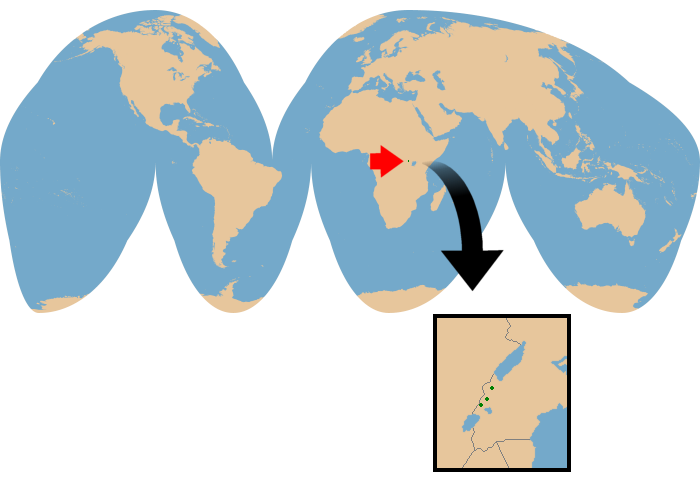Kingdom: |
Animalia |
Common name:
Scientific name:
Other names: |
Rwenzori red duiker
Cephalophorus rubidus
Ruwenzori black-fronted duiker, Céphalophe de Rwenzori, Rwenzoriducker, Isuku |
Physical Characteristics
- Head and body length: Approximately 75 cm
- Shoulder height: Approximately 45 cm
- Tail length: Approximately 5-10 cm
- Adult weight: Approximately 15 kg
- Shoulder height: Approximately 45 cm
The fur of this medium-sized duiker is soft, dense, and woolly. The overall coloration is a striking bright red without any speckling. The underparts are paler (the groin and insides of the front legs may be white). This duiker lacks a distinct stripe down the midline of the back. Over much of the body, the underfur is white, but in the dorsal midline the underfur is darker gray-brown, creating the suggestion of a stripe. The shoulders and forelimbs are darkened, with even darker brown markings on the limb joints; the lower hind legs are entirely blackish-brown. The hooves are described as long and slender, but (particularly the dewclaws) are notably shorter than the black-fronted duiker (Cephalophorus nigrifrons). The short, bushy tail is mostly black above and white below. A dark brown or black blaze is found on the forehead, and the chin is bright white. Both sexes have horns, which may grow 8-9 cm long.
- Similar species
- Both the black-fronted duiker (Cephalophorus nigrifrons) and Natal red duiker (Cephalophorus natalensis), and their related forms, have similar reddish coloration without a dorsal stripe. The Rwenzori red duiker can be distinguished primarily based on range and the wooliness of its coat.
Reproduction and Development
Nothing is known about the breeding or development of Rwenzori red duiker. Its reproductive biology is likely similar to that of other Cephalophorus duikers.
Ecology and Behavior
- Family group:
Solitary.
- Diet: No direct observations of diet are available. Likely feeds on afroalpine herbs and lichens - fruiting trees, a staple of most duikers, are absent in the Rwenzori red duiker's habitat.
- Main Predators: African golden cat and likely leopard.
- Diet: No direct observations of diet are available. Likely feeds on afroalpine herbs and lichens - fruiting trees, a staple of most duikers, are absent in the Rwenzori red duiker's habitat.
Habitat and Distribution

Conservation Status
- IUCN Red List:
Endangered (as Cephalophus nigrifrons rubidus, 2016)
- CITES Listing: Not listed (2024)
- Threats: Snaring and illegal hunting, habitat loss.
- CITES Listing: Not listed (2024)
The estimated total population is likely fewer than 2,500 mature individuals.
